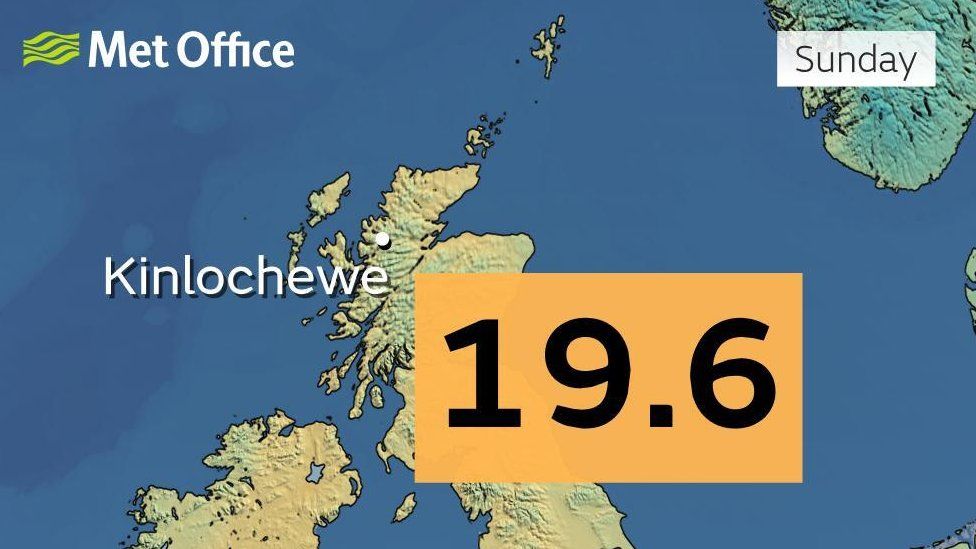You are using an out of date browser. It may not display this or other websites correctly.
You should upgrade or use an alternative browser.
You should upgrade or use an alternative browser.
Ready for the next Ice Age? Winter is coming.
- Thread starter redrumloa
- Start date
- Joined
- Apr 1, 2005
- Messages
- 10,874
- Reaction score
- 6,581
Winter will be along one of these years......
The first few months of the year were unusually warm. And then, starting in June, temperatures rose to record heights and simply stayed there. Every month after June set a new record for high temperatures for that month. So it's not surprising that 2023 will enter the record books as far and away the warmest year on record.
2023 confirmed as world's hottest year on record
The first few months of the year were unusually warm. And then, starting in June, temperatures rose to record heights and simply stayed there. Every month after June set a new record for high temperatures for that month. So it's not surprising that 2023 will enter the record books as far and away the warmest year on record.
Last edited:
- Joined
- Apr 1, 2005
- Messages
- 10,874
- Reaction score
- 6,581
More weather than climate but a weird one. That far north is normally freezing at this time of year.

A new UK record high temperature has been set in the Scottish Highlands, according to provisional figures from the Met Office.
It recorded a peak of 19.6C (67.3F) at Kinlochewe on Sunday, making it hotter than Rome and the Cote d'Azur.
If confirmed it would be the highest January temperature in the UK, breaking a record set in 2003 by more than a full degree celsius.
It would also be the highest winter temperature ever recorded in Scotland.
The temperature in Kinlochewe was significantly higher than the 18.3C (65F) recorded at Aboyne, Aberdeenshire, on 3 January 2003.
Weather record for warmest January set in Scottish Highlands
Share
A new UK record high temperature has been set in the Scottish Highlands, according to provisional figures from the Met Office.
It recorded a peak of 19.6C (67.3F) at Kinlochewe on Sunday, making it hotter than Rome and the Cote d'Azur.
If confirmed it would be the highest January temperature in the UK, breaking a record set in 2003 by more than a full degree celsius.
It would also be the highest winter temperature ever recorded in Scotland.
The temperature in Kinlochewe was significantly higher than the 18.3C (65F) recorded at Aboyne, Aberdeenshire, on 3 January 2003.
- Joined
- Apr 1, 2005
- Messages
- 10,874
- Reaction score
- 6,581
Hurricanes becoming so strong that new category needed, study says
Hurricanes are becoming so strong due to the climate crisis that the classification of them should be expanded to include a “category 6” storm, furthering the scale from the standard 1 to 5, according to a new study.Over the past decade, five storms would have been classed at this new category 6 strength, researchers said, which would include all hurricanes with sustained winds of 192mph or more. Such mega-hurricanes are becoming more likely due to global heating, studies have found, due to the warming of the oceans and atmosphere.
- Joined
- Apr 1, 2005
- Messages
- 10,874
- Reaction score
- 6,581
This ice age better get its ice skates on.
World's first year-long breach of key 1.5C warming limit
- Joined
- May 17, 2005
- Messages
- 12,266
- Reaction score
- 2,696
I'm sure that happened a few years back. Of course, it depends on your date for "pre-industrial".
- Joined
- Mar 31, 2005
- Messages
- 7,728
- Reaction score
- 2,596

Over a decade later, climate scientist prevails in libel case
But the case is not entirely over, as he plans to go after the publishers again.
- Joined
- Apr 1, 2005
- Messages
- 10,874
- Reaction score
- 6,581
We’ve just had a year in which every month was a record-setter
Last June was the warmest June on record. Every month since has been similar.
June 2023 did not seem like an exceptional month at the time. It was the warmest June in the instrumental temperature record, but monthly records haven't exactly been unusual in a period where the top 10 warmest years on record have all occurred within the last 15 years. And monthly records have often occurred in years that are otherwise unexceptional; at the time, the warmest July on record had occurred in 2019, a year that doesn't stand out much from the rest of the past decade.But July 2023 set another monthly record, easily eclipsing 2019's high temperatures. Then August set yet another monthly record. And so has every single month since, a string of records that propelled 2023 to the warmest year since we started keeping track.
Yesterday, the European Union's Copernicus Earth-monitoring service announced that we've now gone a full year where every single month has been the warmest version of that month since we've had enough instruments in place to track global temperatures.
-EDIT-
Forgot to add, it's bloody freezing in Glasgow today. So much for global warming, etc, etc.
- Joined
- Apr 1, 2005
- Messages
- 10,874
- Reaction score
- 6,581
Except for here in Scotland where it has been cold and wet for almost the entire summer. 

Summer 2024 was world's hottest on record
- Joined
- Apr 1, 2005
- Messages
- 10,874
- Reaction score
- 6,581
Haven't properly looked at the methodology here but at first glance this seems to have merit. I've posted a fair chunk here but there's far more detail in the link:
Here, scientists from the United States, the United Kingdom, Sweden and the Netherlands, use several different approaches to investigate the influence of climate change on these different aspects of hurricane Helene, following the same approach as with Typhoon Gaemi that led to severe impacts in the Philippines, Taiwan and Hunan province of China earlier in the year, to analyse whether and to what extent human-induced climate change affected wind speeds and rainfalls associated with Hurricane Helene. For the assessment of the role of climate change in the heavy rainfall, we divide the most impacted region into two subregions, the coastal region encompassing 29.5-32 °N and 81.5-86 °W (figure 1.1) where Helene made landfall and caused 2 days of extreme rainfall, and the inland region, encompassing 34.5-38 °N and 80-85 °W (figure 1.1), in the Southern and Central Appalachians where the rainfall from the hurricane combined with an earlier heavy rainfall system and led to 3 days of unprecedented rainfall. To study the conditions that formed and fuelled Helene, we also analyse the role of climate change in high sea surface temperatures and potential intensity, a metric combining sea surface temperature, air temperature and air humidity data to predict maximum hurricane wind speeds.
 Figure 1.1: Accumulated precipitation over the southeastern US from 25-27th September 2024. The track of Hurricane Helene is shown as a series of red points, and the red regions are those used for extreme rainfall analysis in section 2 of this report. The borders of the affected states are shown for reference. Data from IMERG.
Figure 1.1: Accumulated precipitation over the southeastern US from 25-27th September 2024. The track of Hurricane Helene is shown as a series of red points, and the red regions are those used for extreme rainfall analysis in section 2 of this report. The borders of the affected states are shown for reference. Data from IMERG.
Climate change key driver of catastrophic impacts of Hurricane Helene that devastated both coastal and inland communities
Here, scientists from the United States, the United Kingdom, Sweden and the Netherlands, use several different approaches to investigate the influence of climate change on these different aspects of hurricane Helene, following the same approach as with Typhoon Gaemi that led to severe impacts in the Philippines, Taiwan and Hunan province of China earlier in the year, to analyse whether and to what extent human-induced climate change affected wind speeds and rainfalls associated with Hurricane Helene. For the assessment of the role of climate change in the heavy rainfall, we divide the most impacted region into two subregions, the coastal region encompassing 29.5-32 °N and 81.5-86 °W (figure 1.1) where Helene made landfall and caused 2 days of extreme rainfall, and the inland region, encompassing 34.5-38 °N and 80-85 °W (figure 1.1), in the Southern and Central Appalachians where the rainfall from the hurricane combined with an earlier heavy rainfall system and led to 3 days of unprecedented rainfall. To study the conditions that formed and fuelled Helene, we also analyse the role of climate change in high sea surface temperatures and potential intensity, a metric combining sea surface temperature, air temperature and air humidity data to predict maximum hurricane wind speeds.

Main findings
- Hurricane Helene formed in the Gulf of Mexico above record-hot sea surface temperatures (SSTs). In the days leading up to Helene’s landfall, a line of slow-moving storms formed along a stalled cold front, drawing in tropical moisture from Helene’s outer edges. This system, stretching from Atlanta through the southern Appalachian region, led to very heavy rainfall in the southern states and Appalachia even before the heavy rainfall associated with Helene arrived, leading to devastating flooding. Overall, at least 227 people died, the highest death toll from a hurricane in the mainland US since Katrina in 2005.
- In addition to the very heavy rainfall caused by the hurricane, and the preceding rain event, the steepness of the terrain funnelled rainwater into rivers and streams leading to extremely sudden flash flooding as high as rooftop levels making evacuations impossible in many regions.
- In today’s climate, that has already been warmed by 1.3 °C due primarily to the burning of fossil fuels, weather observations indicate that rainfall events as severe as those brought by hurricane Helene now occur about once every 7 (3 – 25) years in the coastal region, and about once every 70 (20 – 3000) years in the inland region.
- To determine the role of climate change in the rainfall we combine observations with climate models. In both regions, the rainfall was about 10% heavier due to climate change, and equivalently the rainfall totals over the 2-day and 3-day maxima were made about 40% and 70% more likely by climate change, respectively. If the world continues to burn fossil fuels, causing global warming to reach 2 °C above pre industrial levels, devastating rainfall events in both regions will become another 15-25 % more likely.
- The IRIS model was used to investigate Helene’s strong winds by analysing storms making landfall within 2 degrees of Helene. By statistically modelling storms in a 1.3°C cooler climate, this model showed that climate change was responsible for an increase of about 150% in the number of such storms (now once every 53 years on average, up from every 130 years), and equivalently that the maximum wind speeds of similar storms are now about 6.1 m/s (around 11%) more intense.
- The environmental conditions leading to a storm of Helene’s intensity were also studied. Using the same approach as for rainfall, we find that climate change increased the potential intensity in September around the track of Helene increased strongly in likelihood by a factor of 18. Using the Ocean Climate Shift Index, we find that the sea surface temperatures (SSTs) over the track of the storm have been made about 200-500 times more likely due to the burning of fossil fuels.
- Together, these findings show that climate change is enhancing conditions conducive to the most powerful hurricanes like Helene, with more intense rainfall totals and wind speeds. This is in line with other scientific findings that Atlantic tropical cyclones are becoming wetter under climate change and undergoing more rapid intensification.
- Hurricane Helene was very well forecast with the national agency NOAA urging media to warn people of “catastrophic and life-threatening” flooding and landslides across the Southern Appalachians. People in affected coastal regions were asked to evacuate ahead of the landfall of Helene. However, most of the deaths occurred farther inland, in the mountainous terrain where challenges such as spotty cell and internet services, limited experience with Hurricanes and more limited evacuation infrastructure have been reported in the media as leaving people feeling caught off guard.
- Along the inland path of Hurricane Helene a network of dams, and drainage systems exists, that has long been identified as highly exposed to hazards and in a general state of disrepair. A catastrophic dam failure was ultimately avoided, despite evacuations downstream of at least 3 dams warning of potential failure. However, current flood protection infrastructure is not accounting for heavy rain cascading into landslides and mudslides in mountainous regions, as happened in the inland region leading to the destruction of homes, businesses and roads.
- Joined
- Apr 1, 2005
- Messages
- 10,874
- Reaction score
- 6,581
As good a thread as any. As an aside, haven't seen any anons blaming the deep state cabal for this one yet. I guess none of the dead being eligible to vote on Tuesday helps with that.

As Spain reels from the flash floods which struck the south-east of the country this week, many are wondering why the death toll, which currently stands at over 200, is so high.
Almost all of the deaths confirmed so far have been in the Valencia region on the Mediterranean coast.
Some areas have been particularly devastated: the town of Paiporta, population 25,000, reported at least 62 deaths.
Various factors, including drivers becoming trapped in their cars, poor planning by officials and extreme rainfall being exacerbated by climate change are all likely to have contributed.
Trapped in cars and garages: Why Valencia floods proved so deadly

As Spain reels from the flash floods which struck the south-east of the country this week, many are wondering why the death toll, which currently stands at over 200, is so high.
Almost all of the deaths confirmed so far have been in the Valencia region on the Mediterranean coast.
Some areas have been particularly devastated: the town of Paiporta, population 25,000, reported at least 62 deaths.
Various factors, including drivers becoming trapped in their cars, poor planning by officials and extreme rainfall being exacerbated by climate change are all likely to have contributed.


